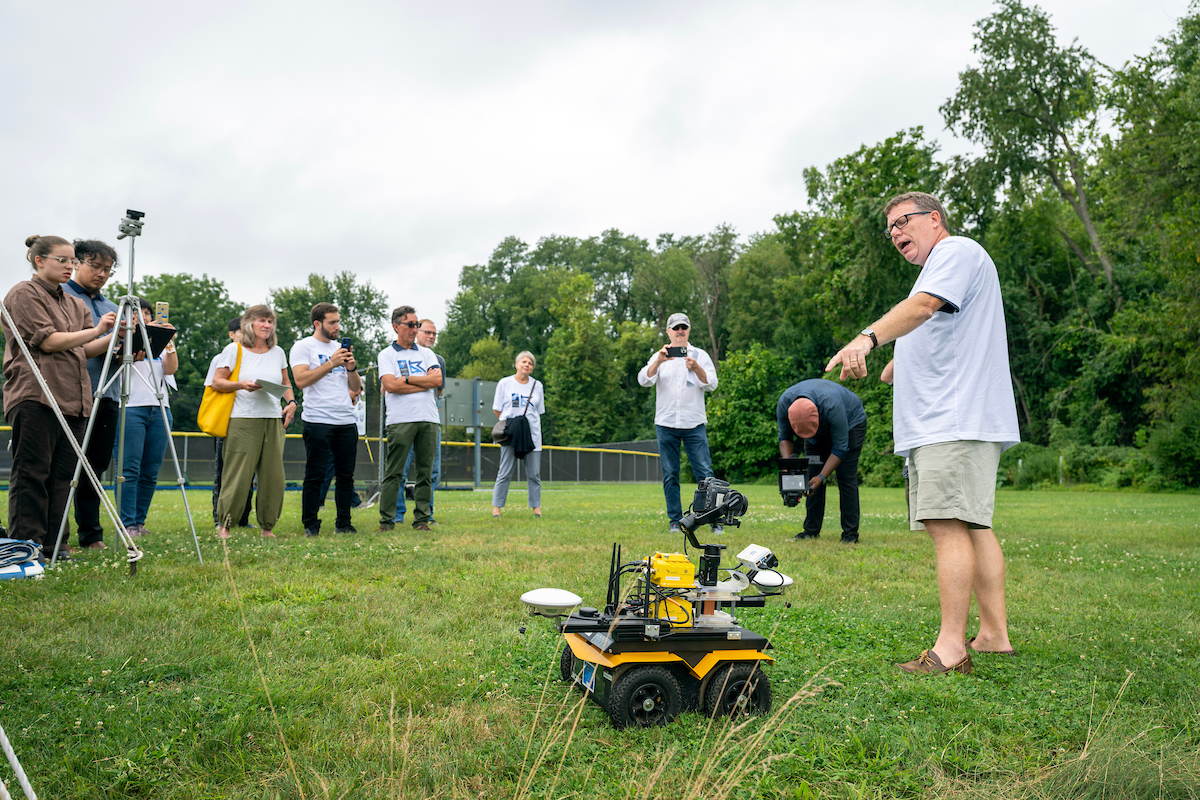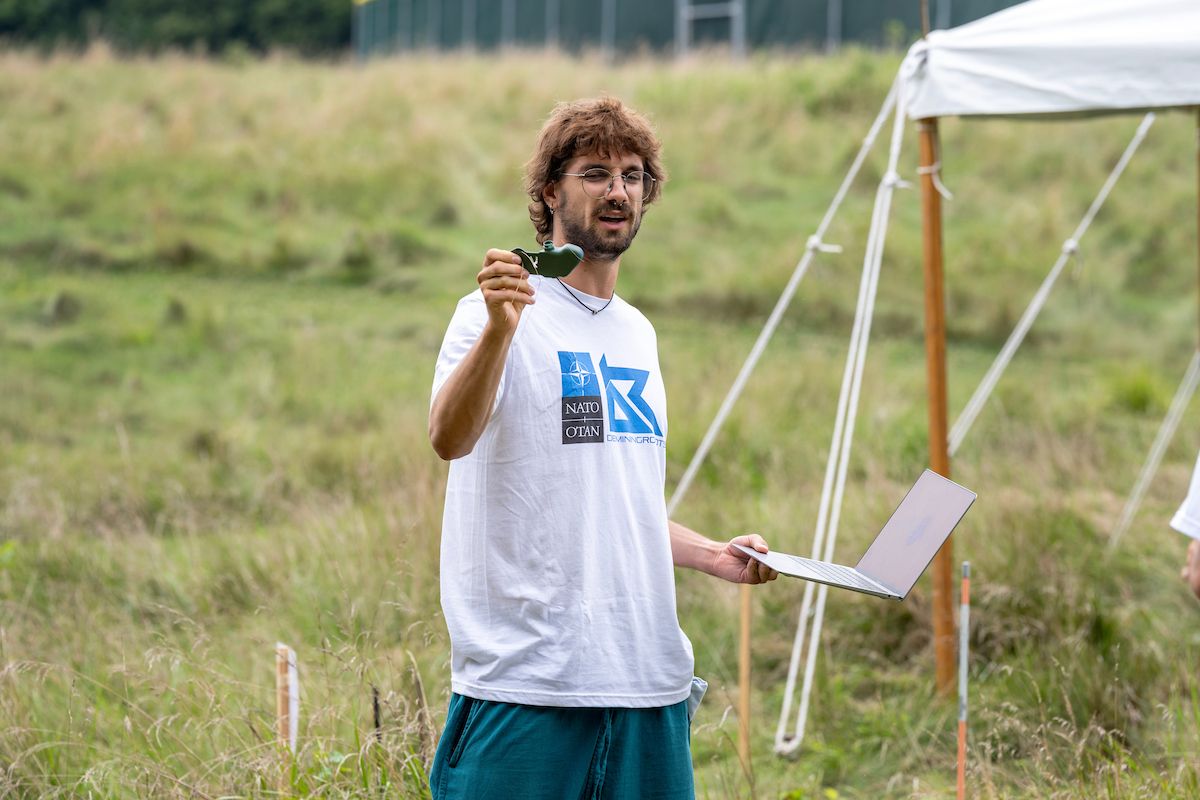F&M Stories
NATO Humanitarian Demining Robot Tested at F&M
A team of two cooperating robots roamed a field at Franklin & Marshall’s Baker Campus Aug. 29 to demonstrate to an international audience their capabilities at demining war-torn areas.
At an obstacle course near Grundy Observatory, the robots, shaped like large shoeboxes with wheels, arms, cameras and sensors, detected trip wires and located buried and surface mines. NATO Science for Peace and Security Program officials and F&M President Barbara Altmann watched the machines perform their tasks.
The robot operators -- Tim Bechtel, director of F&M Science Outreach and Senior Teaching Professor of Geosciences, and Fronefield Crawford, Charles A. Dana Professor of Physics and Astronomy -- are a part of the NATO-sponsored international research and development coalition.
“We’re using an off-the-shelf robot and anything we put onto it, we use 3D-printing. All the plans and codes will be open-source,” Bechtel said. “Local groups or governments could afford to build them using our coalition’s design.”
Also watching the demonstration were some of the people who would eventually use the robots: State Emergency Services of Ukraine, RETTEW Engineering of Lancaster, Walnut Laboratories of Tokyo, and Fenix Insight from the United Kingdom.
The yellow-colored robots are the result of years of work by researchers at F&M and institutions in Italy, Ukraine and Jordan. A third robot that completes the triad team was unable to leave the research laboratory at the University of Science and Technology in Amman in Jordan.
A fourth robot in Ukraine, important for development of automated navigation using impulse radar signals, performed tests in tough circumstances. It also was unable to appear for the demonstration.
Since Russia’s 2014 invasion of Ukraine, F&M has worked with the research coalition to build and design the robots.
One of the coalition’s researchers who was at the demonstration, Tetiana Ogurtsova, works at the Institute for Radiophysics and Electronics at the National Academy of Sciences Ukraine in Kharkiv, which has sustained damage in the war.
Ogurtsova spoke about the relevance of the project to Ukraine, where about 5,000 people are struggling to clear the fields of mines.
"At this number of operators, it would take around 20 years to clear 4,700 square kilometers," she said. "It would take around 757 years to clear all the affected areas and save our people and everyone who is visiting the Ukraine. So, the pace of demining work is very slow."
Professor Lorenzo Capineri of the University of Florence in Italy discussed the multiple capabilities of the robot team that include holographic radar; trip-wire detection; artificial-intelligence surface-threat detection, metal detection, light detection, ranging sensors, and ground-penetrating radar.
“We have a very complex problem,” he said. “Detection of mines in a very difficult environment.”
Capineri estimates three more years of development before the robots are ready to deploy.
Researchers say it will take hundreds of years just to clear the mines in Ukraine's battlefields.
Students Help Program Robots for Dangerous Mission in Ukraine
The "Jackal" rolls quietly across Hartman Green, its four-wheeled boxy shape with wires, lights and twin dome-shaped GPS antennas catch the attention of a passerby: "What is it?" It is a robot, resembling a yellow toy dump truck, and one of four prototypes in the world that has been under development at Franklin & Marshall College's physics lab. Students and their professors are researching Jackal's future assigned task—helping to remove landmines.
Read more »Related Articles
September 29, 2025
Students Make Waves as Susquehanna River Watchdogs
Roselyn Ovalles ’26 and Grace Uwezukwe ’26 spent the summer monitoring the Susquehanna River and its many local tributaries as interns with the Lower Susquehanna Riverkeeper Association.
June 3, 2025
How Do F&M Students Spend Summer Break?
What do F&M students do during the summer? Hear from 10 students and recent graduates to see the breadth of possibilities available, from internships and classes to travel and personal development.
April 14, 2025
From Abstract to Applied: Physics Major's Hands-On Research Journey
For Youssef El Gharably ’25, his ideas may start in the classroom, but they can’t be contained there. At F&M, he made hands-on learning the cornerstone of his educational experience by conducting cutting-edge research alongside his physics professors.


